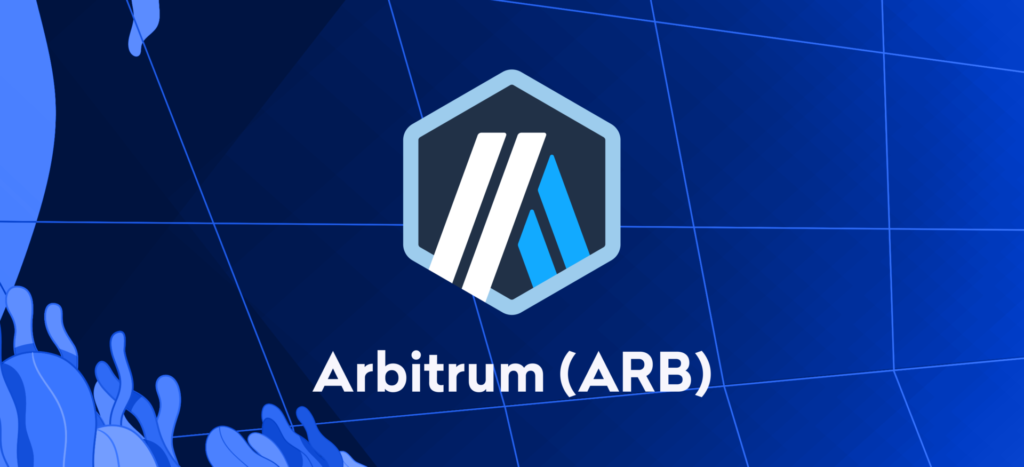Imagine a world where cryptocurrency transactions are not only fast but also affordable without compromising security. This is the promise of layer-2 solutions like Arbitrum (ARB), a technology designed to make Ethereum transactions more efficient. In the ever-growing landscape of blockchain technology, Arbitrum is gaining attention as a solution to Ethereum’s scalability issues. Many traders and developers are now turning to platforms like Arbitrum to overcome the limitations of traditional blockchain networks, such as high gas fees and slow transaction times. Argoox, a leader in AI trading bots, also recognizes the potential of Arbitrum, integrating its unique features for optimized trading strategies. But what exactly is Arbitrum, and how does it fit into the world of decentralized finance (DeFi)? Let’s dive in.
What is The Definition of Arbitrum (ARB)?
Arbitrum is a layer-2 scaling solution for Ethereum designed to make transactions faster and more cost-effective. It operates on top of the Ethereum blockchain, using a technology known as optimistic rollups. By processing transactions off-chain, Arbitrum reduces the burden on the Ethereum network, allowing for higher throughput and lower transaction fees. The ARB token powers this ecosystem, enabling users to interact with decentralized applications (dApps) while enjoying seamless and affordable transactions.
What Is an ARB ETH Address?
An ARB ETH address is essentially an Ethereum address used on the Arbitrum network. Since Arbitrum is built on Ethereum, users can interact with the network using the same addresses they use for Ethereum transactions. This makes it easy to transfer assets between Ethereum and Arbitrum without needing a new address format, providing a smoother user experience for traders and developers alike.
Who Are the Founders of Arbitrum?
Arbitrum was developed by Offchain Labs, a team of blockchain enthusiasts and researchers. The project was co-founded by Ed Felten, a professor at Princeton University, along with Harry Kalodner and Steven Goldfeder. Their combined expertise in cryptography, blockchain, and scalability solutions has helped Arbitrum become one of the leading layer-2 platforms in the Ethereum ecosystem.
Read More: What is Arbitrum (ARB) Trading Bot?
Is Arbitrum Faster Than Polygon?
Both Arbitrum and Polygon are layer-2 solutions designed to scale Ethereum, but they take different approaches. While Polygon uses sidechains and plasma, Arbitrum relies on optimistic rollups. In terms of speed, both networks offer fast transactions, but the difference often comes down to the specific use case and the network’s congestion at any given time. Some users may find Arbitrum faster in certain scenarios, while others may prefer Polygon. However, Arbitrum tends to offer lower latency and greater security through its advanced rollup technology.
What Makes Arbitrum Unique?
Arbitrum stands out due to its use of optimistic rollups, which allow for off-chain processing of transactions without sacrificing security. The platform delivers a seamless experience for Ethereum users by maintaining compatibility with Ethereum’s existing dApps and smart contracts. Its ability to manage a high volume of transactions while keeping fees low makes it a go-to solution for projects looking to scale their Ethereum-based operations. Additionally, Arbitrum’s governance model, which gives token holders a say in the platform’s future, further enhances its uniqueness.
What Is the Use of ARB Coin?
The ARB coin serves multiple functions within the Arbitrum ecosystem. It is used for governance, allowing token holders to vote on key proposals that affect the platform’s development. In addition, ARB can be used to pay for transaction fees, although users primarily pay fees in Ethereum (ETH). The token also plays a role in staking and incentivizing network players to contribute to the platform’s security and efficiency.
Does Arbitrum Use Gas?
Yes, Arbitrum does use gas, but the fees are remarkably lower than those on the Ethereum mainnet. While users still need to pay transaction fees in Ethereum (ETH), the costs are reduced due to Arbitrum’s off-chain processing. This makes it an attractive option for traders and developers who are looking to save on gas fees while maintaining the safety of the Ethereum network.
How Many Arbitrum (ARB) Coins Are There in Circulation?
As of now, the total supply of ARB tokens is capped at 10 billion. The tokens are distributed among different stakeholders, including the Arbitrum Foundation, early investors, and users who participate in the governance of the platform. The circulating supply continues to grow as more tokens are distributed through various incentives and staking programs, but the overall supply remains fixed, ensuring long-term value retention.
How Is Arbitrum Secured?
Arbitrum uses a combination of optimistic rollups and Ethereum’s base layer security to protect its network. Optimistic rollups assume that transactions are valid unless proven otherwise, which helps speed up the process. In case of fraud or incorrect transactions, validators can submit proofs to challenge the incorrect transactions, ensuring security. This setup allows Arbitrum to benefit from the robust security of Ethereum while processing transactions more efficiently off-chain.
Read More: How to Make Arbitrum (ARB) Trading Bot?
How to Withdraw Money from an ARB Wallet?
Withdrawing funds from an ARB wallet is straightforward. Users can transfer their assets back to the Ethereum mainnet using a process known as bridging. By connecting their Arbitrum wallet to a decentralized bridge, users can seamlessly move their tokens between the two networks. This process typically takes some time due to the finality period required to ensure that no fraudulent transactions have occurred, but it remains a secure way to manage funds between Arbitrum and Ethereum.
Is Arbitrum a DAO?
Yes, Arbitrum is governed by a Decentralized Autonomous Organization (DAO). This means that ARB token holders have the power to propose and vote on changes to the platform. The governance model makes sure that the community has a say in the future direction of Arbitrum, making it a more decentralized and transparent network. Through this DAO structure, users can influence everything from protocol upgrades to treasury management.
Where Can You Buy Arbitrum (ARB)?
ARB tokens are available on a variety of cryptocurrency exchanges, including major platforms like Binance, Coinbase, and Kraken. Users can purchase ARB with other cryptocurrencies or fiat currencies, depending on the exchange. Additionally, decentralized exchanges (DEXs) that support Arbitrum, such as Uniswap, also provide trading pairs for ARB, let users to participate in the ecosystem without relying on centralized exchanges.
Conclusion
Arbitrum is revolutionizing the way we think about Ethereum scaling solutions by offering faster transactions, lower fees, and a secure platform for decentralized applications. With its unique use of optimistic rollups and a robust governance model, Arbitrum is poised to become a key player in the future of decentralized finance. For those looking to leverage these advantages, Argoox’s AI trading bots can help optimize trading strategies on platforms like Arbitrum, unlocking new opportunities for efficiency and profitability. Visit Argoox today to explore how AI-driven solutions can elevate your cryptocurrency trading experience.
Coin Information:
Website:
Online
Extra Links:
Social Media & News:




